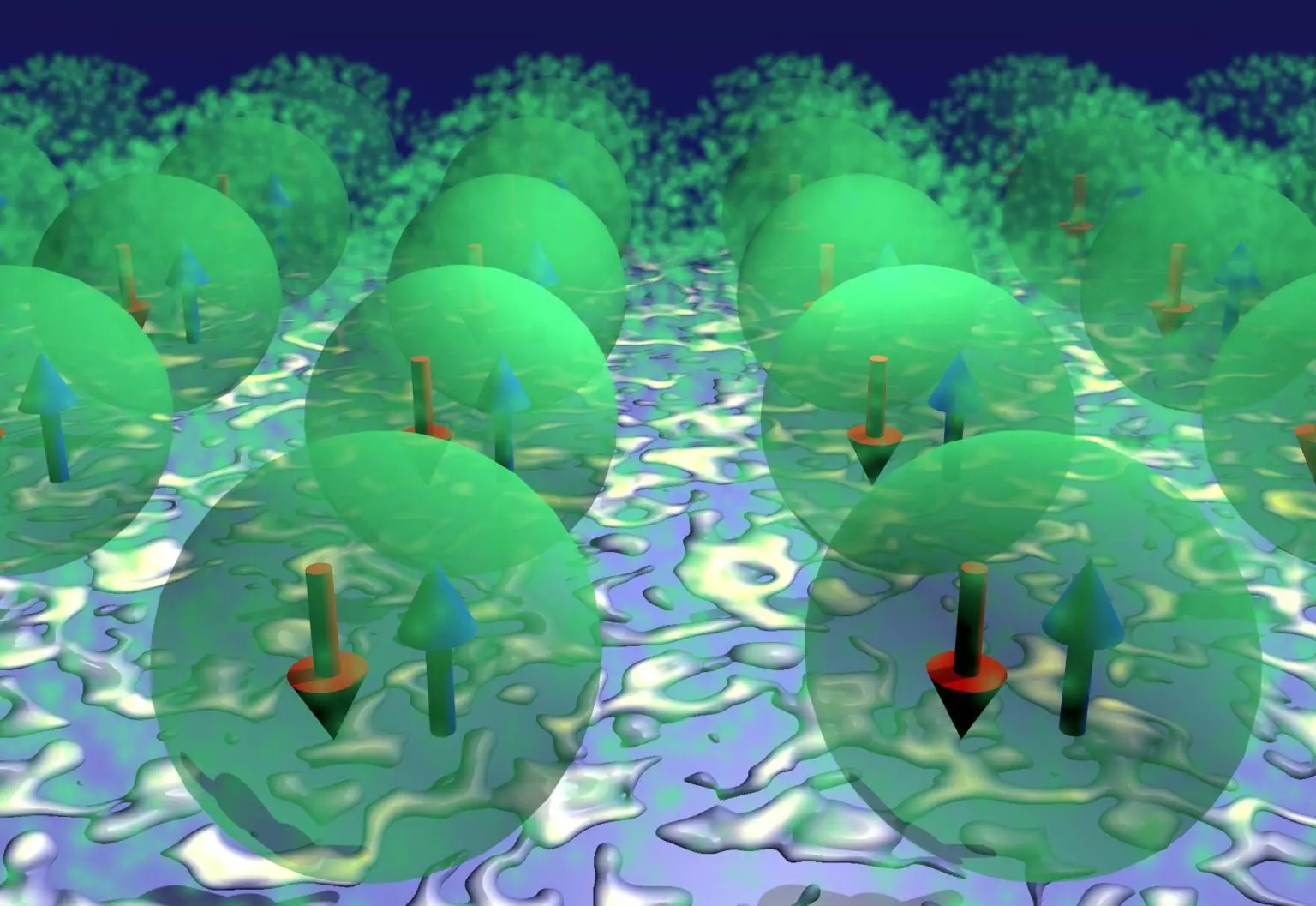Does an electron have poles?
The quantum entangled electrons created a quantum magnet or triplon. That quasiparticle caused an idea about the question: Is there some kind of asymmetry in the electron's poles? Electron is a negative particle, which has multiple negative poles. That thing causes spin 1/2 that is common for one, or monopolar fermions. Because an electron has multiple poles that deny its full rotation.
Artistic illustration depicts magnetic excitations of cobalt-phthalocyanine molecules, where entangled electrons propagate into triplons. Credit: Jose Lado/Aalto University (ScitechDaily.com/Tricky Triplons: Scientists Create Artificial Quantum Magnet With Quasiparticles Made of Entangled Electrons)
"A single point in space can rotate continuously without becoming tangled. Notice that after a 360-degree rotation, the spiral flips between clockwise and counterclockwise orientations. It returns to its original configuration after spinning a full 720°." (Wikipedia/Spin)
The electron's spin. When an electron wobbles back from the up position it releases the photon. An electron is a monopolar particle that denies the full spin. It is still possible that the electron has weak electromagnetic N/S polarity.
But if we think that there is some kind of asymmetry in the number of those poles, we might think that the electron may have weak double polarity. So in that model electron has N and S poles, but another of those poles is extremely weak. That thing makes it possible to make those quantum magnets.
Or it explains why those quantum magnets do not fly away because of electromagnetic repel. The question is the quantum magnet form because there are N/S poles in the quantum field that surrounds the electron pair, or is its source in those electrons? However, the asymmetry of the number of the electron's poles on both sides of its wobbling axle makes it possible to connect electrons.
The triplon forms when there is a weaker point or pothole in the quantum entangled electron pair's quantum field. That pothole pulls the entirety that is two electrons and their quantum field to the point where researchers want to put it. This quasiparticle has multiple uses and it can revolutionize quantum computing and quantum information technology, as I wrote sometimes before.






No comments:
Post a Comment
Note: Only a member of this blog may post a comment.